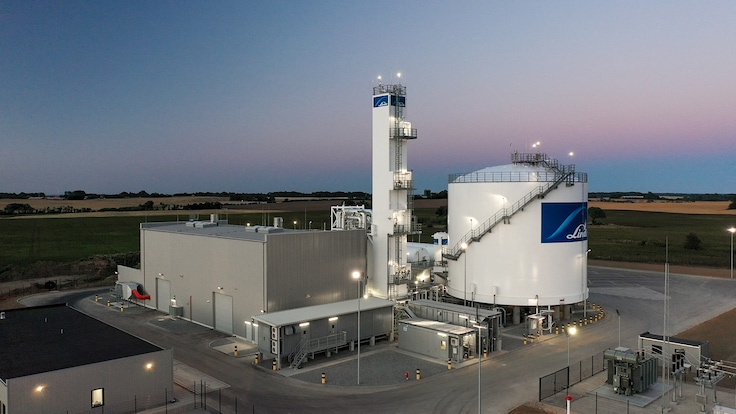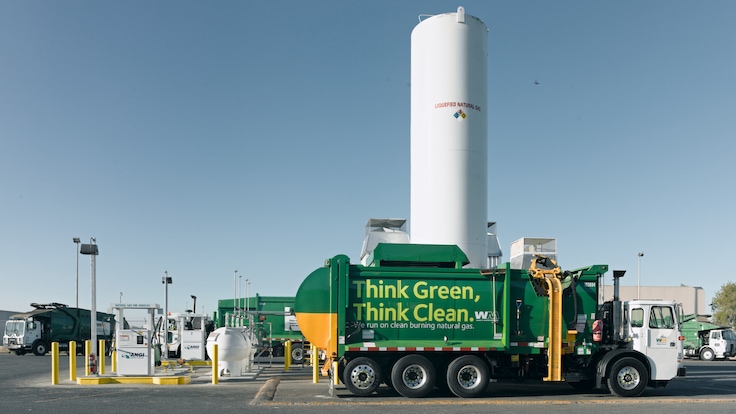Scope 1 refers to direct emissions from sources owned or controlled by your company. In other words, all emissions released into the air as a result of your activities. In addition to combustion-related emissions from boilers, furnaces, etc., it includes process emissions from the manufacture or refining of chemicals, cement, steel, oil, gas and similar products. The electrification of furnaces or compressor drives can shift these emissions to Scope 2. Switching in whole or in part to low- or zero-carbon fuels like hydrogen can also have a dramatic impact on your Scope 1 emissions.
Mitigating Climate Change through Innovation
Take the Next Step on Your Journey to Net Zero

Driving Force for Carbon Footprint Reductions and Efficiency
We empower industry to reach its decarbonization and climate protection goals through a rich portfolio of technologies and services aimed at carbon abatement, early adoption and deployment of emerging technologies and an accelerated transition to cleaner sources of energy.
We also have a long tradition of customer and industry engagement geared towards constantly increasing plant and process efficiency. Our engineering innovations can help you optimize on-stream time, reduce downtime and lower the resulting emissions. Plant efficiency is set to play a key role in the move towards more effective carbon management given that the availability of renewable power will remain limited for the foreseeable future. And our efficiency-enabling measures will help you unlock that window of opportunity.
Extending along the full know-how spectrum, we can help you eliminate or reduce Scope 1 to Scope 3 greenhouse gas (GHG) emissions within your operations and beyond.
Working from Within – Scope 1
We offer a number of technologies to help you reduce direct emissions from your own plant by increasing efficiency.
Many Paths to Reduce or Avoid CO2 Emissions:
- Electrification concepts for furnaces, steam generators and motors take carbon management to the next level, avoiding Scope 1 emissions and lowering Scope 2 emissions through the use of renewables as the source of electricity. Electrification of a steam cracker (e-furnace) is just one example of a key innovation on the sustainability pathway. In collaboration with the chemical majors BASF and SABIC, we have already started up the world’s first large-scale electrically heated steam cracking furnace.
- Innovative technologies such as EDHOX™ for the oxidative dehydrogenation of ethane offer further potential for process efficiency gains. This technology provides a high-performance and energy-efficient path to ethylene. In addition, it provides a dedicated CO2 stream ready for sequestration.
- Similarly, our DRYREF™ dry reforming technology for syngas production has the ability to shrink your CO2 footprint while increasing your process efficiency.
Many Paths to Eliminate CO2 Emissions:
- Our diverse carbon management technologies give you different pathways to reduce your carbon footprint. In hard-to-abate industries with emission-intensive facilities, the most promising option is typically carbon capture, utilization and storage (CCUS or CCS). Our clean technology portfolio has helped reduce or manage harmful emissions from a number of industries, such as Energy and Utilities, Cement Industry, Refining, Iron and Steel.
- The latest addition to our CO2 capture portfolio is our adsorption-based HISORP® CC solution, where CO2 is captured from flue gas or process gases over a wide range of CO2 feed concentrations. For hard-to-abate processes, HISORP CC can help bring your emissions down to near zero by capturing CO2 from process gases at rates of up to 99.7 percent.

Moving Towards Renewables
– Scope 2
Shifting Scope 1 to Scope 2 emissions through electrification and use of renewable power will not be sufficient to reduce emissions to net zero. Renewable power supplies are subject to much higher levels of volatility, and this calls for energy storage solutions and flexible operation of industrial plants. Our FLEXASU® flexible air separation units support demand-side management and the transition to more sustainable sources of energy. These flexible solutions maximize the use of renewable power whenever it is abundantly available and turn down operations when supplies or demand are low.

Completing the Circle
– Scope 3
Looking at other indirect emissions, we can help you unlock various ways of mitigating your Scope 3 emissions.
Alternative Feedstocks for your Industrial Plant:
We can help you reduce your Scope 3 emissions by switching to alternative feedstocks. These can reduce indirect emissions in your supply chain, for example in the olefin generation industry. Feedstock examples include renewable raw materials or recycled feedstocks with a lower carbon intensity.
Improved By-product Utilization and Waste Minimization
We can also help you identify and implement strategies for by-product utilization to reduce your waste streams and shrink your carbon footprint. Our innovative processes and technologies can help you extract value from your waste streams, reducing the need for disposal.
Remote Support and Training
Further obvious savings in Scope 3 emissions can be made by avoiding travel-related emissions with our remote support and training offerings available through the Linde Virtual Academy.
Explore our cutting-edge carbon management solutions
With our interactive website application, you can easily visualize our comprehensive approach - from capturing CO2 directly at the source to its utilization in innovative applications and storage. Dive into our suite of solutions and see firsthand how we tackle emissions from every angle.
Take a closer look at our interactive Carbon Management Solutions Website Application and discover how our solutions can transform your carbon management strategy!
Downloads
-
How to Efficiently Reduce Your CO2 Footprint
(PDF 4.72 MB)
-
The Carbon Management Toolbox
(PDF 1.99 MB)
Scope 1 to 3 Explained
What Falls Under Scope 1?
What Falls Under Scope 2?
Scope 2 refers to all indirect emissions from the generation of electricity, steam, heat or cooling that you purchase from a utility provider. Scope 2 emissions occur physically at the facility where the electricity or utility is generated. You can reduce your Scope 2 emissions by switching to renewable sources of electricity to power your industrial processes or heat your buildings.
What Falls Under Scope 3?
Scope 3 includes all other indirect emissions from your business operations. This is an optional reporting category and includes all upstream or downstream activities linked to your business activities. Typical examples include purchased goods and services, business travel, use of sold products, investments and waste disposal. You can reduce your Scope 3 emissions, for example, by converting or recycling waste products into renewable feedstocks, or by reducing business-related travel through virtualized meetings or training courses.